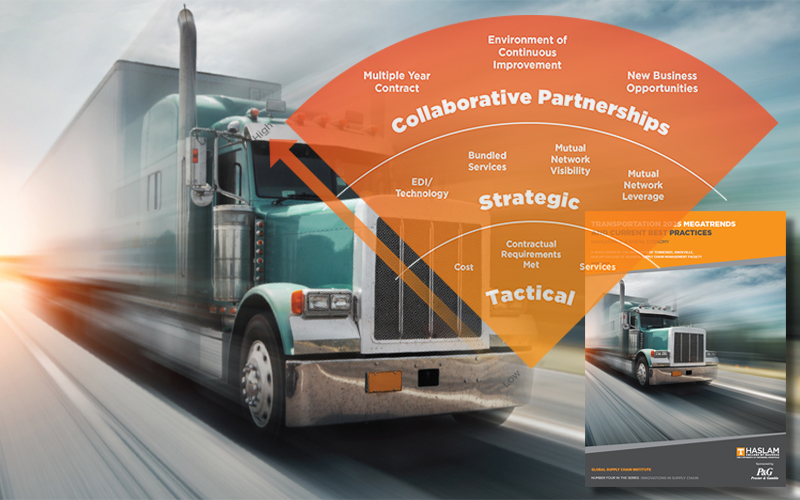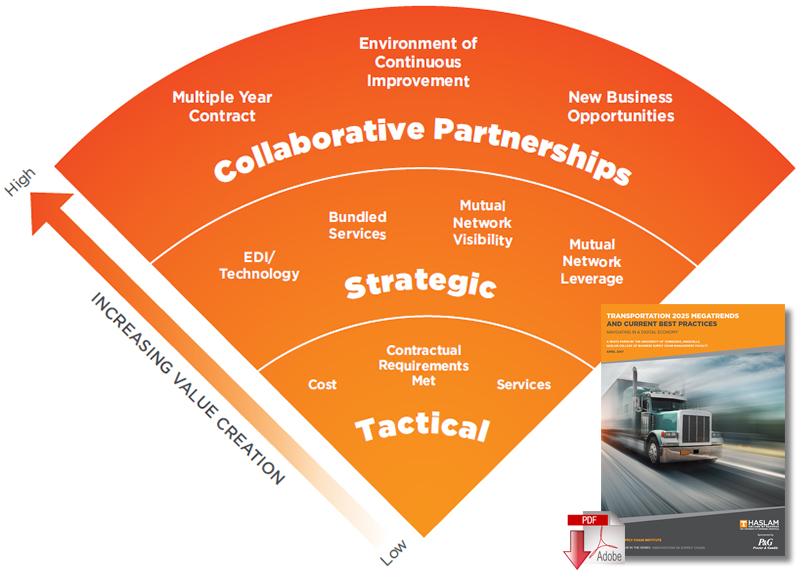Study Identifies Transportation Best Practices & Megatrends to Adopt by 2025

The rising cost of transportation has created strife between shippers and carriers as they leverage the economics of supply and demand at the expense of each other, according to a new study from UT’s Global Supply Chain Institute, this inherent conflict undermines a company’s ability to meet its supply chain and financial goals. By 24/7 Staff
April 28, 2017
“With the rise of e-commerce and consumer expectations, cost can no longer be the primary focus in transportation,” said Mary Holcomb, the Gerald T. Niedert Supply Chain Fellow and Professor of Supply Chain Management in UT’s Haslam College of Business.
“Transportation must be treated as a strategic element of the business plan and the end-to-end supply chain in order for companies to remain competitive in a digital economy.”
Consumers’ delivery experiences and online product availability have become key market differentiators, making transportation the last customer service touch point.
The study, "Transportation 2025 Megatrends and Current Digital Best Practices," emphasizes that this change to viewing transportation as a value-added enterprise will affect the relationship between shippers and carriers, as well as business strategy, much more than previous fluctuations in the business environment.
“Contextualizing transportation in the overall strategy of the company is a must for creating value, especially as the traditional distribution model changes,” said Rick McLeod, vice president of family care product supply at Procter and Gamble.
“If you are still solely focused on minimizing transportation cost without consideration for the overall value proposition, then you will definitely fall short of the customer’s growing expectations for speed and synchronized product availability.”
The research shows shippers who have appropriately aligned transportation with their business model have significantly better performance than those who have not.
The report identifies seven best practices and three megatrends businesses should adopt by 2025 to remain competitive.
All the companies surveyed have created value from Lean methodologies and established a culture for driving transportation excellence.
Other common best practices included creating strategies for long-term transportation partnerships with carriers, leveraging intermodal capabilities, customizing services to meet emerging needs, leveraging digital technology, and bundling services for growth.
The megatrends provide the second major building block in developing a plan to make supply chain capabilities competitive in the long term.
The study suggests that by 2025, leading companies will have replaced their multiple distribution networks with an omnichannel approach, integrated supply chain operations using data that can be interpreted by multiple technologies, and created a chief supply chain officer position.
Holcomb relied on her research from 25 years of annual studies as well as field interviews with 16 benchmark companies to coauthor the white paper, “Transportation 2025 Megatrends and Current Digital Best Practices.”
Procter and Gamble sponsored the paper, which is the fourth in UT’s Innovations in Supply Chain Series.
Transportation Management Value Creation
Relationship Attribute ScaleIn the last two decades we have commoditized transportation.
In 2025 the best supply chains will develop key carrier strategic partnerships.


No comments:
Post a Comment